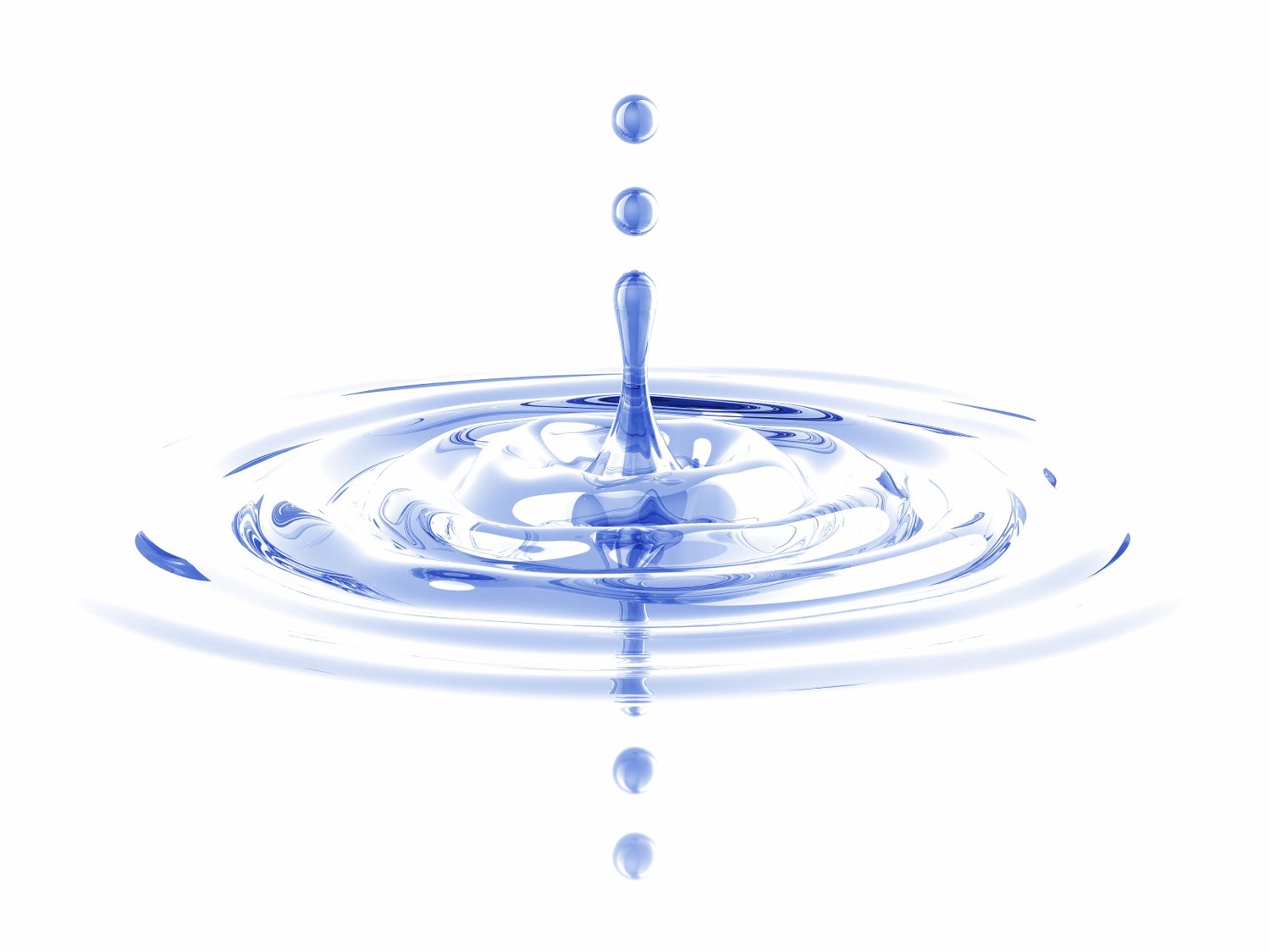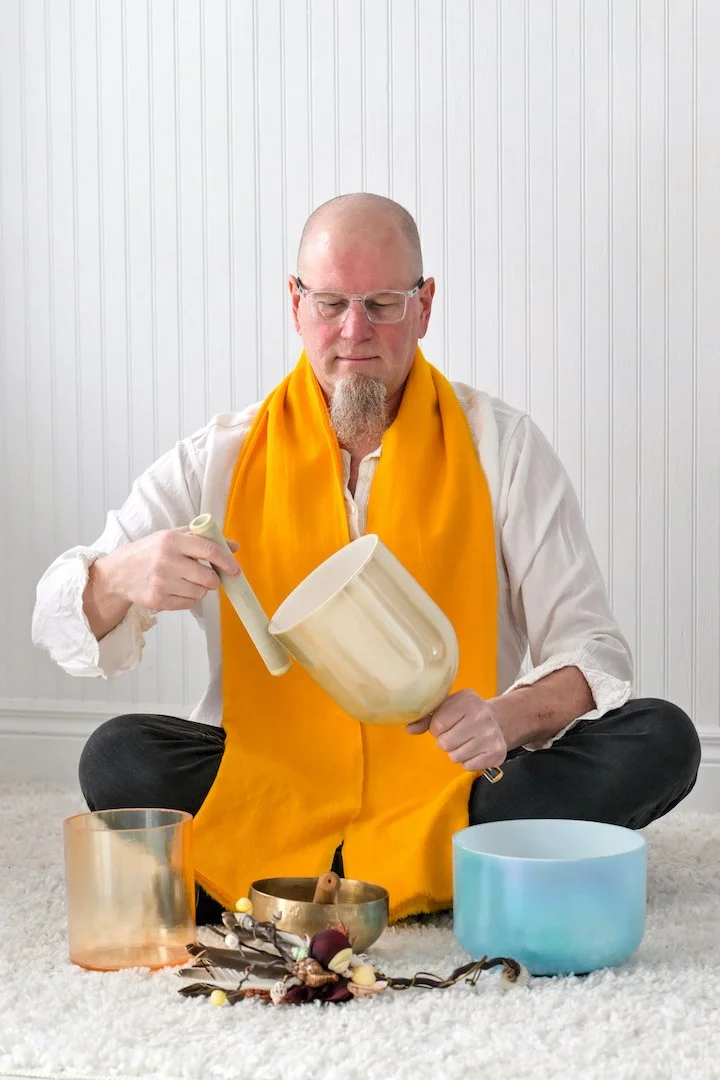Sound Healing through Transduction
Transduction
A transducer converts one form of energy into another. An audio speaker turns electrical signals into kinetic energy by pushing speaker cones to move air. Our ears convert air pressure waves (also kinetic energy) into electrical impulses, the opposite of what an audio speaker does. But our ears aren’t the only transducer of kinetic energy into electrical impulses. Our bodies are sophisticated transducers. Our skin converts touch (also kinetic energy) into electrical signals through our nerves, which our brain converts into thoughts, that then lead us to action. Those actions re-convert electrical signals back into kinetic energy! Sound waves vibrate our skin and ears and our nerves create electrical signals from that too. This is the one of the prime mechanisms of the power of sound to heal.
Rhythm is an interesting case because it stimulates us physically through vibration, but also bypasses the cortex (thinking brain) and is "analyzed" by our basil ganglia: one of the oldest parts of our brain. It’s why we start moving to the beat without even thinking about it sometimes. We survived as a species because this listening part of our brain got really good at detecting threats (is that repeated sound coming from behind me an approaching saber tooth tiger, or just the wind blowing a stick?). Our ears are literally the eyes on the back of our head, and are very quick and accurate in deciphering a 360° understanding of our immediate surroundings. They are way more truthful than your eyes, which are approximating what we are seeing because our mind cannot possibly process all of the data coming in. R. Murry Shaffer says in the Tuning of the world, that they eyes, according to one African tribe are a sense of the will. In other words: we tend to see what we believe we are seeing, rather than what is actually there. Because the bandwidth of sight is so enormous, our brain just can’t consciously process all of that data coming in. Sound, on the other hand, with it’s lower bandwidth, is quicker and our brain has an easier time deciphering what we are hearing. For a great read on how our brain deals with the data our senses are feeding us constantly I recommend Tor Nørretranders The User Illusion. The good news is, that our subconscious brain gets it all, but that’s for another blog!
Here is a fun, short video on how our brain deals with rhythm at brainfacts.org
Transducing kinetic energy into electrical signals
How does our brain turn kinetic energy into electrical signals? Here is a great PBS video “How your brain makes its own electricity”. It’s a great explanation of how our brain makes, and conveys electricity from one place in our body: from one point of conduction, to another point, and also to our brain. One takeaway: make sure you have enough potassium and sodium, which are the chemicals that cause the chain reaction of our neurons firing. Every moment of every day, or body is receiving kinetic vibrations and turning them into electrical signals, passing then around the body and mind, and we get to make sense out of them. And making sense of all the information we are receiving through our body from the world is what our brain gets paid to do (in calories).
Wait, what? Our brain actually makes its own electricity! Wow, that’s pretty cool, and I hope illustrates the power of our thoughts, literally and not just metaphorically. In the above video, the individual neurons firing produce -.70 millivolts. Add that up a few trillion times and there some serious voltage there. And that’s why thoughts become things as we receive stimulus, (kinetic to electrical like in listening to music), process that information (what the heck is that?), and then convert that understanding from electrical signals back to kinetic energy (oh, it’s my favorite song and I wanna dance!).
Our brain waves operate in the frequency range of .0~1 Hz (cycles per second) to about 80 or 90 Hz, and various sources segment those frequency ranges slightly different, but for the most part, they are: delta (0.01 -4 Hz); theta (4-8 Hz); alpha (8-12); beta (12-40) and gamma (40-90 Hz). These are LOW frequencies! And because they are so low in the frequency spectrum as we know it, I believe they have a greater potential amplitude. The bass frequencies in an audio system take more energy/power to produce at equal loudness compared to higher frequencies. They are also difficult to locate in space compared to higher frequencies which are more directional and easy to locate spatially. So, I feel like every time I have a thought, it sends a ripple out into the universe. And when that thought becomes words, or movement, or sound, it actually shakes the universe. That’s why drums are so powerful! It’s also why meditation and sound practice in groups can be way more powerful than as individuals. In a group, we raise the amplitude of the ripples we are creating. I know I made some leaps there, but this is how I make sense of scientific information to inform my own sound practice.
The role of sound practice
All of this got me thinking about what we do as musicians and sound healing practitioners. We create kinetic energy, which the body and brain converts to electrical energy, and the client has an internal experience decoding those stimuli and signals. The closer we can get them to the theta brainwave state (4-8 Hz), the more open our brain is. When we are in the theta state we are 1) able to consolidate, form and retrieve memories; 2) in a more enhanced state of learning and information retention; 3) accessing a more creative state for problem solving; 4) cognitively flexible; 5) able to process and modulate our response to emotions and: 6) able to regulate our mood, sleep, and thoughts into a more relaxed and cohesive state. See “What Are Theta Waves And How Do They Affect The Brain?” for more details (including some fantastic references to more detailed articles). As a sound-healing practitioner, my job is to help them to this theta state. There are many ways to do that. Singing bowls, both metal and crystal often exhibit low frequency oscillations (LFO’s) in that 4-8 Hz range. I have a few metal bowls that have multiple LFO’s, which can entrain the brain to that theta state. I often sing with a bowl, and intentionally go slightly out of tune to create those theta-inducing LFO’s. It’s why I love having a bunch of bowls that are “out of tune” with each other by Western standards. Any two, played together, create low frequency oscillations. Oh, and that’s what binaural beats are: two signals, often in headphones, that are oscillating between both ears at 4-8 Hz. These are some techniques which can create a condition where a client’s body, mind and spirit can do the work that needs to be done.
The role of intentions
What is the role of our intentions? If theta wave state during a session creates a brain condition of plasticity, creativity, problem solving, and accesses our memories, then I believe intentions can set the stage for directing our inner work during a session. I always ask the client if there is anything they want to “bring into this session consciously.” Most have a reason they are there, and that is a great place to start whether they share it with me or not. I encourage clients to focus on what outcome they want, rather than what is perceived as “wrong.” Focusing on what they want allows the body, mind, and spirit to go where it needs to without interference from either of our thinking minds. Often the issue they are dealing with is a symptom of something deeper. And allowing them to focus on what they want can open up a pathway to the true cause. The sound can help it boil to the surface, so it is tangible and the client can begin structuring around how to move to greater wellness. I should also say I never have an intention for a client, beyond being a hollow bone and an open channel for whatever they need at the time. I am not a healer, only a conduit who can reflect their inner state back to themselves through sound. I can help create conditions through which they can make changes.
I do not believe in protocols, or ever assign specific healing outcomes to instruments, notes, or any other singular apparatus, technique, or occurance in the session. All of those things are tools being directed by the client. My job is to just do what is “asked” for in the moment. When I am listening deeply, they tell me exactly what they need through that magical space of intuition and universal communication. I have countless stories of getting instructions to do some really unusual or weird sound, or play an instrument in a really different way than I normally do, or make strange sounds with my voice. And often, the client will comment about that particular part of the session afterwards. Intentions are a carrier wave that more subtle sounds can ride to get in to do their work.
Conclusion
Our brain produces electrical and electrochemical signals also with electromagnetic properties that facilitate propagation throughout our whole body. There is a field in which they are open to play in their own health and well-being and we are, as sound practitioners, are mentors for that process. We hold space, listen, and respond in ways that transduce energy into motion, which creates vibration that is received by the experiencer. Intentions in the form of thoughts become an organizing principle around which our electrical, electrochemical and electromagnetic resources form. Cymatics shows us the organizing principle and power of sound on material. In sound healing, we are the sonic alchemists, following our intuition, so that bodies become the transducers that organize through sound towards greater cohesion and wellness.
Some additional links:
https://thelifeforceinstitute.com/wellbeing/understanding-thought/
https://mybrainrewired.com/theta-waves/what-are-theta-waves-and-how-do-they-affect-the-brain/
Dr. Paul Rudy is a life-long teacher and leaner. He is an award-winning composer, sound artist, sound practitioner, photographer and land artist. He is Curators’ Distinguished Professor of Music Composition, specializing in electroacoustic composition, at the UMKC Conservatory since 1998, where he is currently studying the impact of sound on speech communication in the operating room with Surgilab (UMKC Medical School). His youtube channel @innersoundworlds houses healing mantra music, and his CD series 2012 Stories can be found online.



